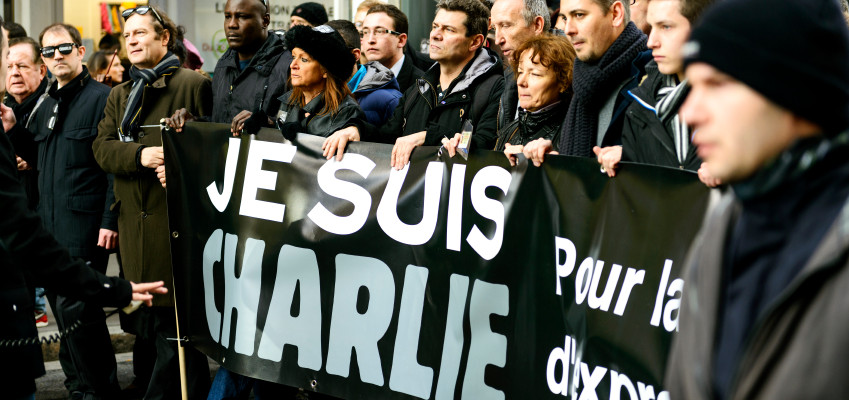The atrocities we see in the news in past months raise fundamental questions about human nature. We would like to think that humans are superior to other species. When we encounter brutal acts of violence, we say that the ones who conduct them are “animals”. Yet while animals will hunt for food or defend their home, they will otherwise strive to remain peaceful. Well-fed lions rarely attack, and cobras dance to the flute of the snake-charmer, as long as he keeps a safe distance. It is, in fact, uniquely human to go fiercely against one’s own species, to engage in violence for its own sake, and to plan murder on a massive scale. Can we humans look at ourselves in the mirror today and confidently like what we see? If aliens are watching us from faraway galaxies, how would they describe us today? Are we the predators at the top of the food chain, or perhaps a virus infecting the planet, as Agent Smith in the film The Matrix suggested?
The one thing that sets us apart from other animals is our capabilities; our intelligence, the tools we build, the way we master our environment, and above all the way we communicate and interact with each another. And capabilities open up choices. As technology advances and we become more capable than ever, the question for our generation is what we choose to do with it. Arguably, we are at a pivotal moment in the history of the human race, required to define our identity as a species for the first time. We can go down in history as the noble, benevolent leaders of the planet, or as mass murderers. It is simply a matter of choice.
The seemingly casual way in which groups like ISIS engage in horrifying acts of cruelty and murder makes it tempting to dismiss them as nonhuman, but of course, they are human. Many of them have parents waiting at home, sometimes siblings, and they probably experience a sense of friendship and camaraderie among themselves. Perhaps in some ways they are kind to one another. There is no doubt that organizations like ISIS should be eradicated. But it is also important to understand the process that leads a group of individuals to go and do what these people do. If we understood the early-stage mechanism that eventually results in the creation of this phenomenon, we would have the ultimate antidote, and perhaps even a vaccine to prevent it. An antidote that we will then use not just to stop barbaric acts of murder and genocide, but also to define our identity as a species.
Research psychologist Phil Zimbardo, best known for the Stanford Prison Experiment, studied a phenomenon called dehumanization, where the enemy is depicted as nonhuman and is demonized so it will not be spared and more easily attacked. When he and I met during Ride of Your Life, Zimbardo described dehumanization in the following way:
“Dehumanization is the central process of all prejudice and discrimination. You take an individual and you treat him or her as part of a category (based on religion, race, origin, etc.) and then all of the stereotypes of the category are dumped on that individual. It’s a filter that prevents me from knowing the real you, it prevents me from humanizing you… In 1994, the Hutu government in Rwanda goes on the radio and says, “Your neighbors the Tutsi, whom you’ve lived with for decades, are nothing more than cockroaches. Imagine that your house is flooded with cockroaches — what do you do? We’re going to have to kill them. So we’re going to give every man a machete and every woman a club; your job is to get rid of the cockroaches.” …And in 100 days, they killed 800,000 Tutsis. The weapons of mass destruction: a machete and a club. And once the killing started, it became more and more cruel. It was rape; it was beheadings.”
The process of dehumanization is the heart of the mindset that results in the type of violence that organizations like ISIS exhibit. The antidote to it, is the opposite process, called humanization. In Zimbardo’s words: “To humanize somebody is to give them an identity. It’s to see what about you is like me.”
In other words, when we recognize the similarities between us, we naturally adopt a new lens through which to see the world. A lens that is made of the compassion, empathy, and kindness of well-fed lions. A lens that views each person first as a person, and not as the religion, country, or ethnicity he or she represents. We clearly must address violence firmly where it already exists, but the more strategic task of our society is to reach out to the places where violence is only starting to brew, and to nip it in the bud by being compassionate and open-hearted to the ones who start to see us as nonhuman. To respond to verbal statements of hatred or to initial expressions of dehumanization with love and with generosity to prove it wrong. If we do this as society, we will neutralize the process that creates our future enemies, and eventually become a global human society that can be proud to look at itself in the mirror.
I realize that to some, this approach may seem naïve, unrealistic, or impractical. In the next part of this post I will present a statistical model that we can use to explain the process of humanization, how it works, and how each of us fit within it.


